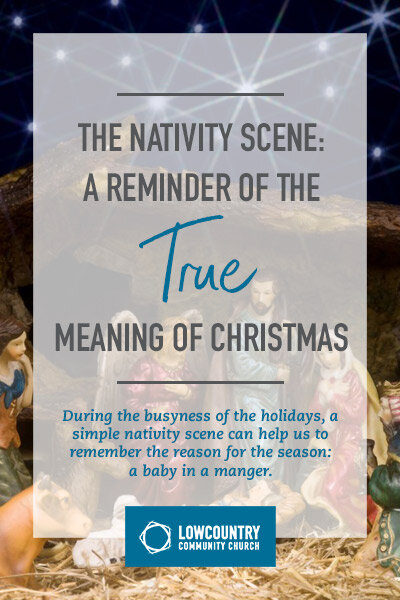The Nativity Scene: A Reminder of the True Meaning of Christmas
By Donna Brooks
“’Behold, the virgin shall be with child, and shall bring. forth a son. They shall call his name Immanuel;’ which is, being interpreted, ‘God with us.’” – Matthew 1:23
I love everything about Christmastime: the Christmas trees, the music, the colorful lights, the gifts, and, of course, the decorations! In my family, it is a tradition to drive around town after church on Christmas Eve and see all the lights and decorations. I love how people go all out! But, I think what I like seeing the most is a simple nativity scene: the sweet baby Jesus lying in a manger. It always brings me back to the true meaning of Christmas: the gift of God’s Son.
The history of the nativity scene
St. Francis of Assisi is credited for creating the first nativity scene in the year 1223 in Greccio, Italy. He was inspired by his visit to Bethlehem, the city of Jesus’ birth. St. Francis reportedly said, “I want to do something that will recall the memory of that Child who was born in Bethlehem, to see with bodily eyes the inconveniences of his infancy, how he lay in the manger, and how the ox and ass stood by."
St. Bonaventure, a theologian and St. Francis’ biographer, tells the story in the book, “The Life of St. Francis of Assisi”:
It happened in the third year before his death, that in order to excite the inhabitants of Grecio (sic) to commemorate the nativity of the Infant Jesus with great devotion, [St. Francis] determined to keep it with all possible solemnity; and lest he should be accused of lightness or novelty, he asked and obtained the permission of the sovereign Pontiff.
Then he prepared a manger, and brought hay, and an ox and an ass to the place appointed. The brethren were summoned, the people ran together, the forest resounded with their voices, and that venerable night was made glorious by many and brilliant lights and sonorous psalms of praise. The man of God [St. Francis] stood before the manger, full of devotion and piety, bathed in tears and radiant with joy; the Holy Gospel was chanted by Francis, the Levite of Christ. Then he preached to the people around the nativity of the poor King; and being unable to utter His name for the tenderness of His love, He called Him the Babe of Bethlehem.
Come let us adore Him
Reenactments of the night of Christ’s birth soon became popular throughout Europe. Eventually, statues replaced the humans and animals in the scene, and by the end of the 19th century, dioramas of the nativity were made in various sizes and materials, including terracotta, paper, wood, and wax.
Today, nativity scenes usually include the shepherds and the wise men, along with Joseph, Mary, and Jesus. But that’s not biblically accurate. Nowhere in the Bible does it say that the shepherds and the wise men were together at Jesus’ birth. It is believed that the wise men’s visit came much later. However, I feel that seeing a nativity scene where the Jewish shepherds and the gentile wise men are bowing together in awe of the baby Jesus serves as a reminder for us all to bow together before Jesus in awe and adoration and worship. God with us—that is the true meaning of Christmas.
Donna Brooks is a freelance writer and editor and the owner of Red Clay Editorial Services in Bluffton, South Carolina. In her free time, Donna is an avid runner, reader, photographer and traveler.
References
The Life of St. Francis, Harper Collins Spiritual Classics
The First Nativity Scene Was Created in 1223, Smithsonian Magazine

